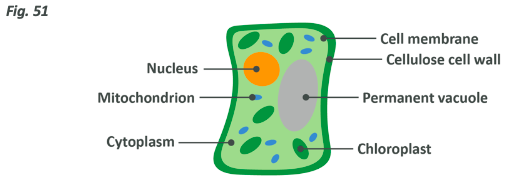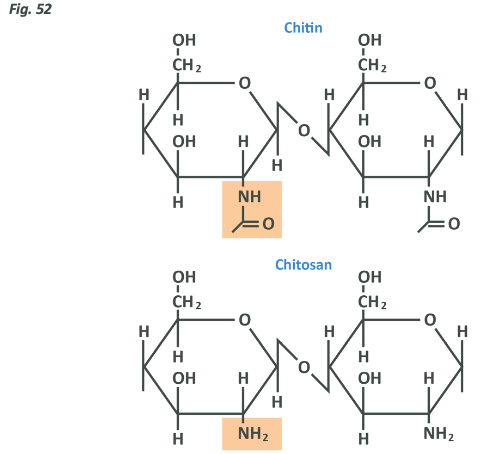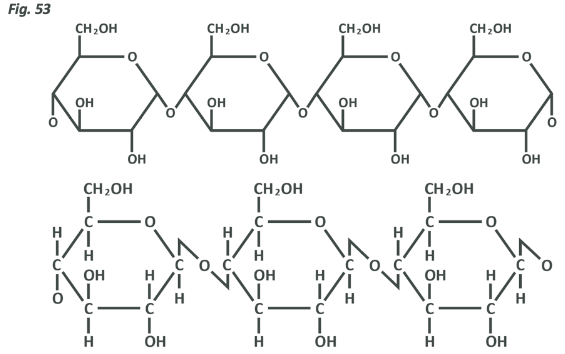Introduction to fibre
It’s time to move the discussion to fibre. Fibre is found in two forms within the diet:
- Dietary fibre: This is non-digestible carbohydrates and lignin that are intrinsic in foods we eat
- Functional fibre: This refers to isolated, extracted or manufactured fibres that are added to foods (or used in supplements) because they have certain physiological effects on humans.
These fibres may be soluble, insoluble, more or less viscous and more or less fermentable by gut bacteria. The impact that this has (and what it means) will be explained in a moment, but for now just remember that each characteristic of fibre results in a different effect on you and your health.

Both forms of fibre initially come primarily from plants. Plant cells, unlike human cells, have a cell wall which adds protection, rigidity and shape, and this cell wall is comprised of 95% dietary fibres of numerous different forms that may change with the plant’s maturity. Certain specialised plant cells designed to help provide structure also contain lignin deposits. As you can probably deduce from this brief introduction, consuming whole plant foods provides a vast array of different kinds of plant matter – with the specific kind of fibre you get being determined by the part of the plant you eat (be that the stem, leaf or root), and the age of the plant itself (a mature plant will contain more lignin, for example). Because the majority of fibre is found in cell walls, and the thickest cell walls are found on the outer edge of plants, it should be self-evident that whole grains and unpeeled whole fruits and vegetables are the most effective foods to eat if you want to get the most fibre per bite.
It is important to note that we very rarely, if ever, consume single sources of fibre in whole foods. When we eat fruits, vegetables, grains, legumes and nuts we are eating an array of different fibres and therefore benefit from each uniquely. As such, while you are reading the following information, it may be useful to bear in mind that the benefits of all different kinds of fibre will probably apply to any diet comprised of whole foods, that contains a lot of plants, rather than it being the case that eating X food has Y benefit.
With that being said, it can be useful to reflect on the different fibres contained within the diet, as understanding the parts always increases an appreciation for the whole. Let’s now look at the kinds of fibre we eat.
Psyllium
Psyllium is perhaps the most commonly supplemented fibre, and is one of the most widely used functional fibre. It is extracted from the husks of psyllium seeds, and is extremely good at absorbing water, meaning that it’s often used to provide viscosity in solutions, but is also used in products such as Metamucil owing to its laxative-like properties.
Chitin and chitosan

Chitin (kite-in) has a similar structure to cellulose, but has an amino group as one of its side chains. It’s found in the cell wall of some plants but, interestingly, is also the prime component of the exoskeleton of some insects and crustaceans. Chitosan has a very similar structure, but is missing an acyl group as above. Both are water insoluble and viscous. Interestingly, chitosan carries a positive electrical charge that allows it to bind to dietary lipids in gastric juices.
This leads chitosan to be referred to as a ‘fat binder’, often found in supplements. Presently no evidence exists to indicate that these lead to long-term fat loss, however, as the small amount of difference made, is quickly made up for elsewhere in the diet.
Cellulose
This is a dietary fibre but is sometimes added to foods to increase fibre content. It’s comprised of long chains of glucose monomers linked together with 1,4 bonds just like the starch amylose, but critically the bond appears on the opposite side of the glucose. Below is an image of amylose and beneath that is cellulose. Notice the subtle difference between the two.

This slight difference renders the enzyme amylase and brush boarder enzymes incapable of breaking down cellulose chains to allow them to be absorbed into the intestinal wall – a perfect example of why fibre is not digestible by humans. These large chains line up next to each other and join together to create a robust 3D shape perfect for the construction of rigid plant cell walls.
These properties also render cellulose insoluble in water in its natural form, and somewhat difficult (though not impossible) to ferment in your gut. It’s found in large amounts in bran, nuts, legumes, peas, root vegetables, cruciferous vegetables and in the skins of fruits like apples. It can also be added to foods to add texture or thickness and is therefore found in cake mixes, sauces and many other packaged goods.
Hemicellulose
Hemicellulose is a highly-branched polysaccharide comprised of xylose, mannose, galactose, arabinose and glucoronic acid in different combinations, used as cellulose to construct plant cell walls. The exact structure of the primary backbone and the branches varies between plants and between areas within the same plant, and this of course alters its behaviour. Hemicellullose that contains acids on its side chain will be somewhat hydrophyllic due to this acidic area, whereas a hemicellulose without acids will be hydrophobic. Additionally, the fermentability of hemicellulose will vary depending on its constituent monomers (a monomer is a molecule that can be bonded to other identical molecules to form a polymer). Hemicellulose is the other primary fibre found in bran, whole grains, nuts and legumes, while being found in lesser amounts in fruits and vegetables. It is not found to any great degree in packaged foods as a functional fibre.
Polydextrose and polyols
Polydextrose, as you can imagine, is a long chain of dextrose monomers. Polyols, on the other hand, are comprised of sorbitol or other similar carbohydrates. These are manufactured at high heat in a vacuum, and added to foods as a bulking agent or sugar substitute, often referred to as ‘sugar alcohols’. They are slightly sweet in taste but are not absorbed by the intestines and so have no direct caloric value. They are highly fermentable, however, which means that they do impact your energy intake (generally these are considered to provide roughly 2kcal per gram). Excessive consumption of sugar alcohols has been known to cause acute laxative effects.
Resistant starches
Resistant starches are, as is somewhat self-evident, starches that resist digestion. There are 4 different forms of resistant starch:
- RS1:This is found in cellulose walls of certain plants, and is therefore inaccessible to amylase enzymes. Un-milled flax seed is a classic example of this
- RS2: This is a more granular form of starch. Recall that amylose is comprised of long, linear chains of glucose; these chains can become tightly packed owing to their uniform shape, meaning that the central starches are inaccessible to enzymes. Un-ripened bananas and sweetcorn are both examples of this form
- RS3: Retrograde starch is made when starchy foods like potatoes and rice are cooked and then cooled, altering the structural makeup of the carbohydrates within them
- RS4: This is similar to RS3, but is made via chemical modifications of starches
Both RS3 and 4 are considered functional fibres whereas RS1 and 2 are dietary fibres. It has been hypothesised that resistant starch can aid in weight loss owing to its impact on calorie intake, but the average intake of resistant starch is estimated to be around 6-8 grams per day, and consuming more than this is relatively difficult, if not highly impractical. Due to this relatively low intake and the small impact it has on total calorie balance, no evidence of weight loss has been seen in clinical resistant starch trials. Some small amount of evidence does suggest that an increased intake of resistant starch may increase lean body mass and reduce fat mass while eating at caloric balance, and potentially increase muscle accruement during a hypercaloric condition. This preliminary data is not yet conclusive, however.
Additionally, resistant starch has been shown in animals to alter the makeup of gut bacterial populations, which has been shown in both humans and animals to be a potential factor in weight management and a host of other health markers. Again this data is relatively new, but remains interesting.
Beta glucans
Beta glucans are large polymers, comprised exclusively of glucopyranose units. Beta glucans are extremely fermentable, and water soluble, and are found in oats, barley and some mushrooms. They are often added to foods as a functional fibre as they have been shown to decrease serum cholesterol in some trials.
Fructans (inulin, oligofructose and fructooligosaccharides)
Fructans are chains comprised primarily of fructose units, that appear in varying lengths. Inulin is comprised of up to 60 fructose units that culminate in a glucose monomer. Though human digestive enzymes are not able to break these down, bacteria such as bifidobacteria are, thanks to their ability to secrete beta-fructosidase enzymes. Oligofructose and fructooligosaccharides can be considered to be ‘chunks’ of larger inulin chains, comprising 2-8 or 2-4 fructose units respectively (each may or may not also contain a glucose). The interaction between fructans and bifidobacteria will be discussed later in this module.
Fructans are found in alliums (onions, garlic, leeks), Jerusalem artichokes, bananas, wheat, barley and rye. Occasionally fructans are added to products such as low-fat ice cream or low-fat cakes to provide a similar mouthfeel to the full-fat version.
Gums
There are a number of different gums relevant to human nutrition, each comprised of many different sugars. These are highly branched hydrocolloids, meaning that they form a gel upon contact with water and are therefore, highly viscous and soluble but are also extremely well fermented. These are secreted by plants as a response to injury to promote healing and to protect the vulnerable plant from further damage, but they also have interesting impacts on human nutrition. Gums commonly consumed include guar gum, Xanthan gum and gum Arabic but there are a great deal more.
These are found naturally in oats, barley and legumes while being added to many different packaged goods as thickeners or water binding agents (for example to provide a pleasant mouthfeel in gluten-free baking). Artificially added gums may be extracted from plants, but they can also be secreted by micro-organisms.
Pectin
Pectin is a dietary and functional fibre comprised of an unbranched chain of galacturonic acid units, occasionally punctuated by another sugar. This acidic structure makes it highly hydrophyllic and soluble in water. Additionally, it is extremely well fermented by gut bacteria. Due to its stability in low (acidic) pH environments, it is found in acidic foods like citrus fruits but also in legumes, nuts and some vegetables. Because of its gel-forming capabilities pectin is often added to both confectionary and enteral formulas given to tube fed hospital patients as a source of fibre.
Lignin
Lignin is a plant cell component used for developing a defined structure. It’s comprised of phenols, which are small units that bond together extremely strongly. Because of this, lignin is non-fermentable and does not absorb or dissolve in water. Some phenols can ferment in the gut to become active compounds similar to hormones and there is some preliminary research to suggest ligning does this, resulting in a very weak phytoestrogen but this is generally considered not to happen meaningfully. Lignin is found most commonly in fruits with edible seeds such as many berries, in the bran layer of cereals and in root vegetables like carrots.
As you can see there are a wide range of different fibres, found in foods, added to foods and used as supplements. Each one may be more or less soluble, more or less viscous and more or less fermentable and these properties carry over to differing health effects. As you read the next section which describes these effects, we ask you to remember what was said in the opening section – we rarely, if ever consume one fibre in isolation and consuming a diet rich in all forms of fibre should convey the vast majority of these benefits.